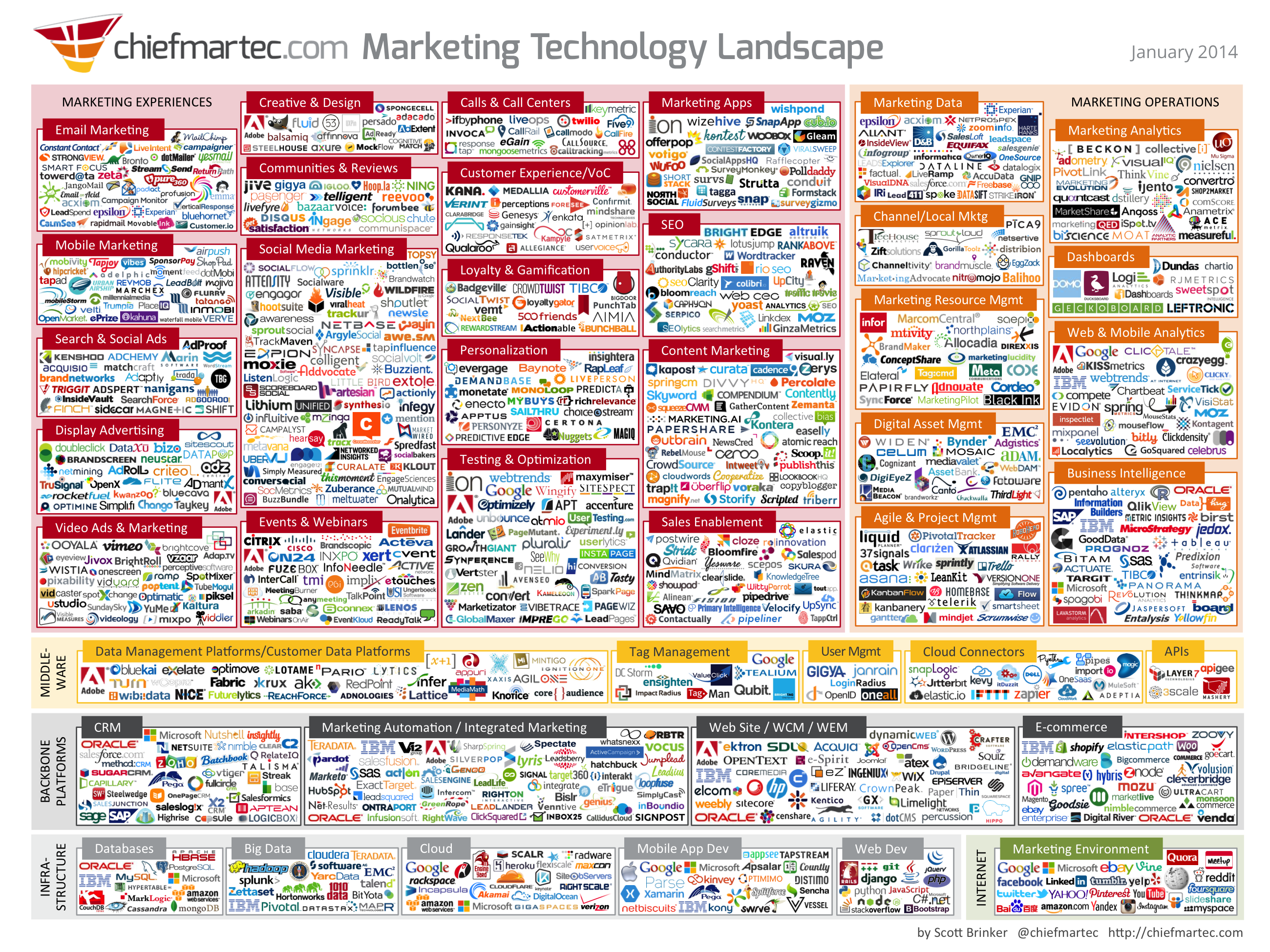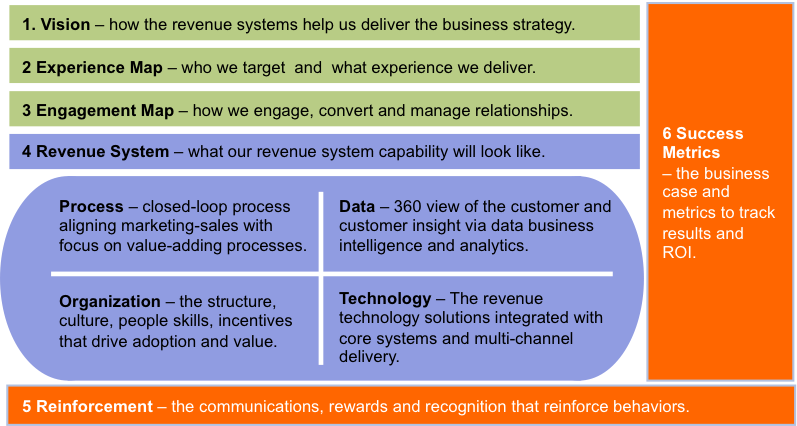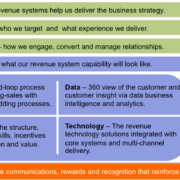Align Sales and Marketing with a Revenue Systems Blueprint
When implementing CRM and Marketing Automation, first align marketing and sales with a Revenue Systems Blueprint.
For 20 years, CRM (and now Marketing Automation) has promised to help organizations capture customer value. Businesses that attract, sell, service and retain the best customers see positive effects on growth and profitability. By delivering relevant experiences, customers engage more deeply, become more loyal, and act as advocates. As sales and win rates go up, cost of acquisition goes down, satisfaction increases. The longer the relationship, the more opportunities there are to cross sell additional products and services and build lifetime value.
But, as the diagram below illustrates, marketing technologies are expanding rapidly and cut across every dimension of the marketing, sales and PR ecosystem. It is not as simple as selecting a CRM or a Marketing Automation solution. Successful implementation requires alignment across different business areas, especially marketing and sales.

Businesses need to architect and deliver closed-loop revenue systems and in our service model, we describe three steps: Brand, Integrate and Engage. As part of our process, we develop a Revenue Systems Blueprint that helps define business and IT elements for closed-loop revenue marketing. This blueprint helps us bring the business process, people and technology together.
Revenue Systems Blueprint

The Blueprint has six elements:
- The Vision describes how the revenue systems will deliver on the business vision and strategic priorities. It is important to clarify and align on what we expect to achieve.
- The Experience Map defines how the prospects and customers will engage the brand through the buy-sell-service process.
- The Engagement Map determines how to convert visitors and prospects and capture customer value.
- The Revenue System is where process, data, organization and technology requirements come together for a closed-loop process.
- Reinforcement defines how capabilities and behaviors across the organization will help ensure alignment and a collaborative process.
- Finally, Success Metrics specify revenue-focused measures that inform progress.
Use this Blueprint approach when you tackle your Revenue Systems initiative. Look for more posts from Revenue Architects that tackle each of these dimensions in more detail.
Contact us to learn more about how we help design and deliver revenue systems.




Leave a Reply
Want to join the discussion?Feel free to contribute!